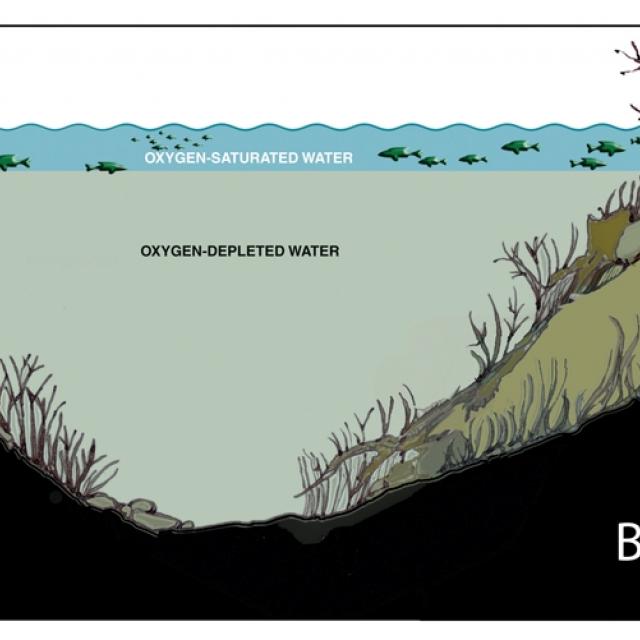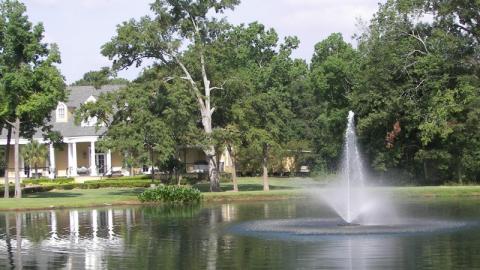Water quality and keeping bodies of water clean has become and will continue to be a hot topic around the world. With limited clean, fresh water available on the planet, it is necessary to help protect and keep water clean and safe. A simple and effective way to do this with surface water is to aerate.

Unpleasant odors from stagnant ponds are one of the most common complaints of both large and small bodies of water. Controlling those odors can turn a pond from liability to an asset. A pond or lake is its own living organism with thousands of processes occurring every minute of every day. When these processes are out of balance, foul odors can result.
The Problem
Most foul odors occur from incomplete decomposition of organic matter in the benthic zone, or pond bottom. Millions of bacteria are constantly processing organic material, such as dead plant debris, animal waste, grass clippings, leaves, etc. When there is not enough dissolved oxygen present, the bacteria cannot break down the organics completely and the byproduct is foul odors, mostly consisting of sulfur compounds that give that rotten egg smell. Not only is the smell bad, but these gases can be dangerous for living organisms in your pond, like your fish.
The Solution
Aeration and circulation are the keys to combating foul odors in a pond. By adding supplemental aeration with a surface aerator unit or an aerating style fountain, you can assist nature in cleaning the water. Oxygen present in the water will not only help protect the fish and other living organisms in the pond, it also helps reduce organics and contaminants. High oxygen levels throughout the water column will allow for naturally occurring bacteria to more rapidly decompose organic material from plant growth, animal waste, and contaminant runoff. It will also ensure that this decomposition is done by aerobic bacteria that will produce CO2 as a byproduct instead of methane and sulfur compounds, which leads to less harmful gases in the pond and reduction in foul pond odor.
In deeper ponds or those with varying contours, you may also need a water circulator in combination with a surface aerator or aerating fountain. The water circulator will mix and move the water preventing stagnant areas at the surface as well as ensuring the oxygen produced by the aerator is mixed properly to the ponds bottom where bacteria can use it during decomposition.
Another option is a bottom mounted, diffused aeration system. These systems use compressed air that is run through a weighted hose along the bottom to a diffuser head where the air bubbles toward the surface. This rapid movement toward the surface entrains large amounts of water and can successfully aerate and mix large, deep bodies of water. These are limited though in shallow applications as efficiency id directly proportional to depth.
Combining aeration and circulation is an easy, effective method to reducing and eliminating foul pond odors. Providing proper dissolved oxygen levels and water movement in your pond will allow the natural pond processes to work more effectively and completely giving you a healthier, more attractive pond setting.


